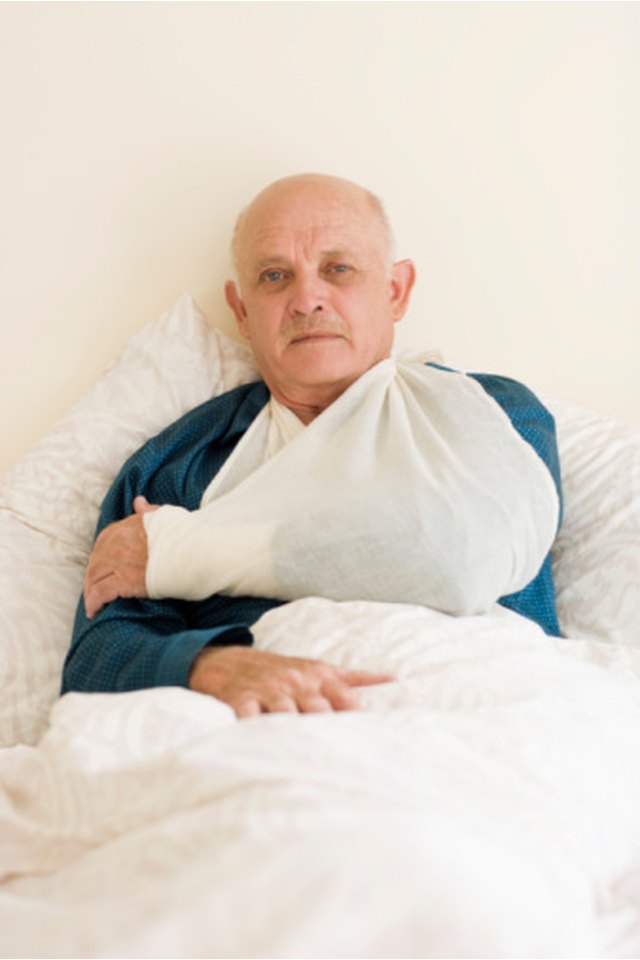How to Sleep in an Arm Sling

An arm sling is commonly used for arm, elbow or shoulder injuries. Wearing a sling keeps the injured body part stationary, protecting it and maintaining appropriate positioning to promote proper healing. A sling also allows arm and shoulder muscles to relax to prevent muscular tightness, which could hamper healing and increase pain. Sleeping with a sling may be a bit uncomfortable, as you may have to adjust your normal sleep position in order to protect your arm while dozing.
Sleeping on Your Back
Position your body comfortably on your back with your head properly supported by a pillow or two.
Place a pillow under your knees to reduce lower back stress.
Put a pillow against the side of your slinged arm in a slightly raised position.
Position a pillow between your torso and your slinged arm so that your arm is resting comfortably against your body.
If you choose to sleep on the side opposite of your injured arm, rest the sling against the side of your body. Use pillows against both your back and your stomach to support your injured arm and prevent it from slipping out of position.
Tips
You may need more than the suggested number of pillows to gain proper stability and comfort.
Make sure that your injured arm is in a comfortable position when you sleep. Over-elevation of your shoulder, for example, can cause shoulder tightness and increase pain.
References
- Health Info Translations: Wearing a Shoulder Sling
- Cleveland Clinic. Shoulder Fractures.
- Hollman F, Wolterbeek N, Zijl JAC, Van egeraat SPM, Wessel RN. Abduction Brace Versus Antirotation Sling After Arthroscopic Cuff Repair: The Effects on Pain and Function. Arthroscopy. 2017;33(9):1618-1626. doi:10.1016/j.arthro.2017.02.010
- Johns Hopkins Medicine. Arm Care After a Stroke.
Tips
- You may need more than the suggested number of pillows to gain proper stability and comfort.
- Make sure that your injured arm is in a comfortable position when you sleep. Over-elevation of your shoulder, for example, can cause shoulder tightness and increase pain.
Writer Bio
Sandra Koehler is a physical therapy assistant and massage therapist with over 20 years of experience in pain management and physical rehabilitation. She has been a health and wellness freelance writer for over eight years and her work has been featured in publications such as "Living Without" and "Advance," and online at sites including WAHM, She Knows and Parenting.com.
